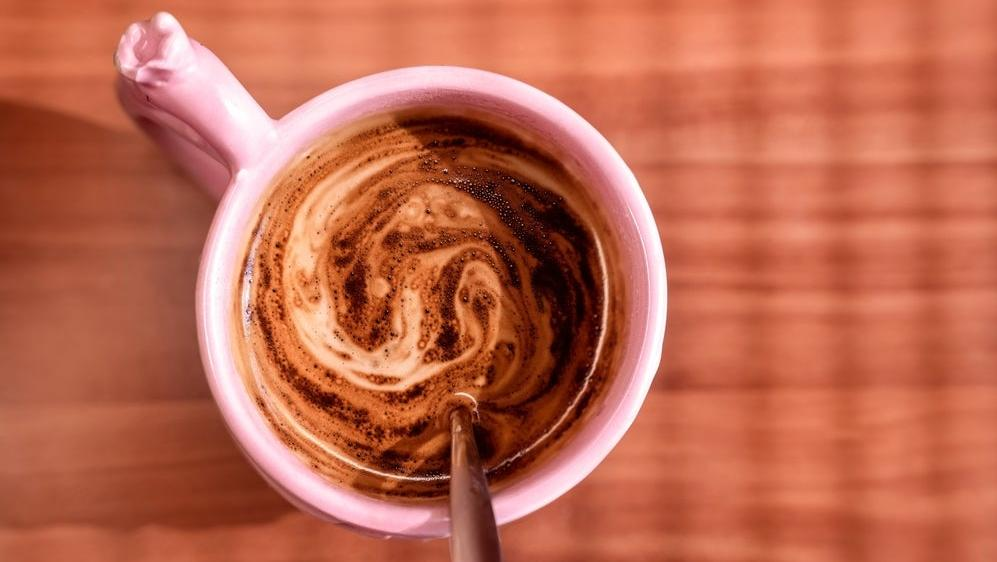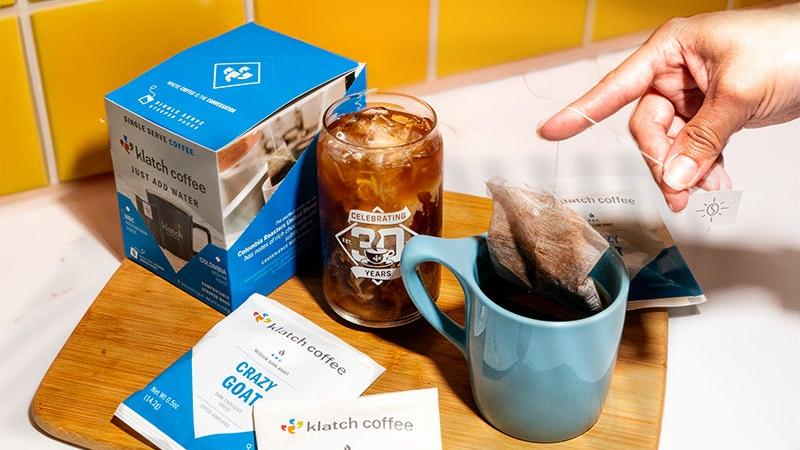Instant Coffee Is Fancier Than It's Ever Been
Craft coffee roasters are selling their own on-the-go and instant coffee packets.
I recently went to a wedding for a couple with all-around good taste. As an out-of-town guest, I was given one of those delightful little gift bags full of stuff for my hotel stay, like snacks and headache medicine (a classic wedding guest giveaway). Also included in the bag was a sachet of instant coffee.
But it wasn't any type of instant coffee I'd seen before. The instant coffee I was used to consisted of rough brown flakes in a glass jar, either shoved in the back of a cabinet at a relative's beach cottage or thrown in with camping supplies. This, in contrast, was a small, beautifully designed packet from a craft coffee purveyor. It was fancy instant coffee, which felt like an oxymoron.
The coffee, which was from Partners Coffee Roasters, was delicious. I actually wanted more. My curiosity was piqued: What's up with craft instant coffee? How do craft coffee roasters manage to make it taste good, and why do they want to sell it?
“Instant” coffee isn’t necessarily instant
Technically, "instant coffee" is any coffee that is brewed to be concentrated and is then freeze-dried or spray-dried. The resulting solid bits of coffee are broken up and sold as granules. Simply stir them into hot water and, presto change-o, you have a cup of coffee.
The method outlined above encompasses many varieties of on-the-go coffee, including craft varieties, but some involve slightly different processes. These include sachets, which work a lot like a tea bag and take a few minutes to brew, and "single serve pour over," in which a small device (in this offering, it's cardboard) anchors coffee grounds to a mug so you can make a cup of pour-over coffee wherever you are.
All of these methods aim to put a craft cup of coffee in your hand despite your distance from a barista or kitchen appliance. These are on-the-go coffee options for people who have discerning tastes in coffee—a far cry from the reputation that instant coffee has developed across the decades.
Everyone’s drinking instant coffee
According to Beverage Industry, the global instant coffee market is currently valued at $42.5 billion and is expected to go up to $69.2 billion by 2033. That report cites urbanization, changing lifestyles, and modernization as factors driving the demand, but doesn't provide specifics as to why those things would necessarily breed a need for instant coffee specifically.
Heather Perry, CEO of Klatch Coffee, told The Takeout that her company debuted Steeped sachets, its on-the-go option, to put a good cup of coffee in reach, regardless of where the customer is.
"I travel a lot, and one of my big complaints is, 'Man, I wish I had good coffee,'" Perry said. "Hotel room coffee is just not the best. A product like Steeped is beautiful for when you are traveling on the road. You shouldn't have to have these perfect conditions to get a good cup of coffee. It's meant to be easy access to a delicious cup of coffee."
Instant coffee’s outdated reputation
The instant coffee stalwarts at the grocery store, especially those from big brands, is known for being inexpensive: My local Target sells it for $6-$10 per jar. Starbucks' variety is on the higher end of that spectrum, and its container says it contains 40 cups of coffee—that's roughly $0.25 per cup.
By contrast, craft instant coffee brands, regardless of method (instant, sachet, personal pour over), are consistently much more expensive. A jar of Blue Bottle instant espresso, for example, is $25 for 12 servings. Klatch sachets are $2.50 each when purchased individually, with discounts available if you buy them in quantities of 8 or 40. Verve Coffee Roasters offers a pack of seven instant cups for $18. Partners Coffee Roasters, the instant packet that started me down this path of inquiry in the first place, sells six packets for $16.
A $2 or more per cup, buying instant coffee from a craft roaster isn't exactly something for bargain hunters. After all, even if you're buying craft beans, a pound of regular coffee can yield 30 cups.
Perry said that Klatch is aware of the price-per-cup quandary, but doesn't necessarily see it as a barrier, because from a marketing standpoint, Klatch doesn't aim to make Steeped anyone's daily cup. It's meant to be there when a fresh-brewed up isn't, whether because you ran out of beans at home, you're camping, or you're in a hotel far from your favorite coffee shop.
"Your daily cup is hard to swallow at $2.50," she said. "But I always have Steeped in my cupboard for if I run out of coffee. That's when we take it out. I have a few here and there. If you drink coffee every day, there are more efficient ways to enjoy your coffee, for sure. But I do like how it's made specialty coffee so accessible for people."
How coffee houses think about instant coffee
The price point for instant versions of craft coffee may be higher than a brewed cup at home, but it's lower than a cup of thoughtfully brewed coffee at your local cafe. Prices vary wildly, of course, but the two craft coffee establishments I frequent charge $3 and $3.75 per cup, respectively, for basic brewed coffee. Technically, I could replace those cups with instant craft coffee and get a nuanced flavor profile for a tad less money.
But I won't.
As with most things, the reasons I go to a craft coffee shop are many. I need a break from my work; I want to see friends; I have a connection with the baristas and their work. There are sensory and social aspects to visiting a coffee shop that are undeniable and that go beyond the cup of coffee itself.
And, though it might sound counterintuitive, that's why craft instant coffee is such a brilliant move. Making craft coffee available on the go has the potential to raise our overall expectations for a cup of coffee, thereby ensuring our continued patronage of craft roasters whenever and wherever possible.
Beyond its ability to instill customer loyalty, Perry noted that instant and otherwise convenient craft brews break down some barriers for people. The way she sees it, for a long time speciality coffee was seen as intimidating, which made people hesitant to engage with it.
"I do think you're seeing so much craft instants is that there has been pushback on speciality being so inaccessible," she said. "As an industry, we're telling people you don't have to spend a million dollars or be a brain surgeon to have a good cup of coffee."

